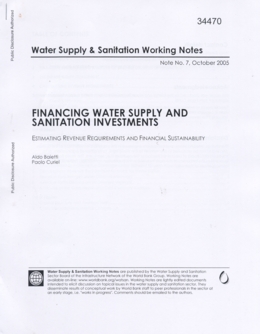|
 This paper examines the applicability of conventional formulas that have been widely used in the water supply and sanitation sector to determine revenue requirements for average tariffs. It discusses the impact of capitalization issues on revenue requirements, particularly focusing on the lack of long term financing for water investments in developing countries. Given the resistance among policy makers to increase water tariffs, the paper also highlights the impact that intangibles or implicit charges have on undermining utilities financial situation and how such intangibles can be incorporated in the revenue requirements formula to ease the shocks that may arise as a result of uncontrollable external factors. Finally, the paper introduces the concept of “appropriate costs” which can guide practitioners into carrying out performance audits of publicly owned utilities in order to assess which tariff level is actually appropriate for users to bear and which should be shouldered by other parties. Table of Contents: Executive Summary 1. Introduction 2. Financial Sustainability: A Matter of Reliable Sources of Financing 3. The Infant Utility Challenge 4. Calculating Revenue Requirements 5. Factors Impacting Tariff Level Determination 6. Summary of Recommendations and Policy Implications Post Date : 05 Juni 2009 |